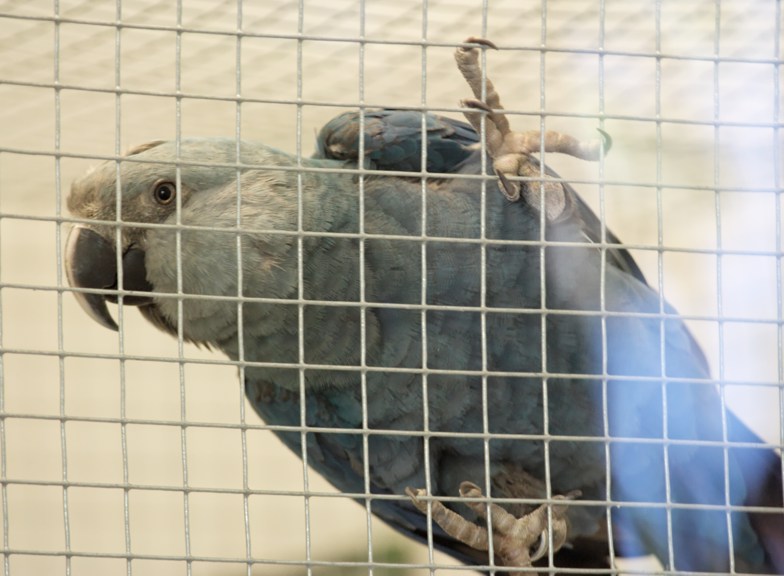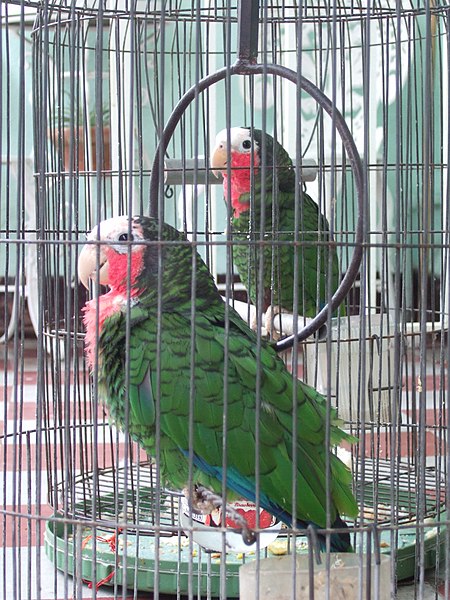 My experience with reintroduction programs for creatures ranging from spiders to Guam Kingfishers has convinced me that the good intentions of conservationists, standing alone, are never sufficient to ensure any creature’s long-term survival. Conservation must make economic sense to people living in the habitat where the work is being done, and they must also genuinely favor the animal’s return. Today I’d like to highlight a program that is doing an excellent job at laying the groundwork for the return of the Spix Macaw (Cyanopsitta spixii) to Brazil.
My experience with reintroduction programs for creatures ranging from spiders to Guam Kingfishers has convinced me that the good intentions of conservationists, standing alone, are never sufficient to ensure any creature’s long-term survival. Conservation must make economic sense to people living in the habitat where the work is being done, and they must also genuinely favor the animal’s return. Today I’d like to highlight a program that is doing an excellent job at laying the groundwork for the return of the Spix Macaw (Cyanopsitta spixii) to Brazil.
Gone but not Forgotten
Extinct in the wild since 2000 and represented by less than 100 captive individuals, the beautiful blue Spix Macaw is among the rarest of all birds.
Recently, representatives of the group Parrots International visited Curaca, Brazil (Bahia State), the former habitat of this bird, in order to access reintroduction possibilities. A Loro Paraque Foundation project that had been in place in Curaca had been cancelled 4 years prior, but the area’s tiny schoolhouse retained the name given it by local children at that time – The Spix Macaw School.
Children’s Concern Sparks Groups to Donate
Children in the area remained concerned about birds – fearing the researcher’s truck held bird-poachers, 3 youngsters stalked it for several miles in the broiling sun, and spied on its occupants! Moved by the concern evidence by this action, Parrots International supplied the school with the funds it needed to remain in operation (located in one of Brazil’s poorest sectors, it was about to be closed).
Other groups joined the effort, and soon the school was provided with nighttime electricity (to allow for much-needed adult classes), an upgraded toilet and supplies. In order to assist adults in attending evening reading and writing classes, meals are also supplied.
In addition, 4,000 acres of prime Spix Macaw habitat, known as the Gangorra Farm, has been purchased by Parrots International and the Lymington Foundation.
Practical Conservation
This program presents a fine example of an effective strategy – public support for the macaws was obviously strong, but the practicalities of life in a poor, rural area would likely have prevented effective action. By attending to some basic needs of both adults and children, and placing important habitat under private ownership, Parrots International and its partners have set the stage for what may someday be a successful reintroduction program for the magnificent Spix Macaw.
Further Reading
Learn how to help this and other species via donations, purchases or volunteer action here.
Video of Spix Macaw breeding program.
Spixara image referenced from wikipedia and originally posted by Robert01
 With very few exceptions, providing one’s birds (or any other animal) with more space is beneficial on many levels. However, while keeping White-Crested Laughing Jay-Thrushes, Garrulax leucolophus, I learned that nasty surprises may be in store.
With very few exceptions, providing one’s birds (or any other animal) with more space is beneficial on many levels. However, while keeping White-Crested Laughing Jay-Thrushes, Garrulax leucolophus, I learned that nasty surprises may be in store. That Bird Blog – Bird Care and History for Pet Birds
That Bird Blog – Bird Care and History for Pet Birds




